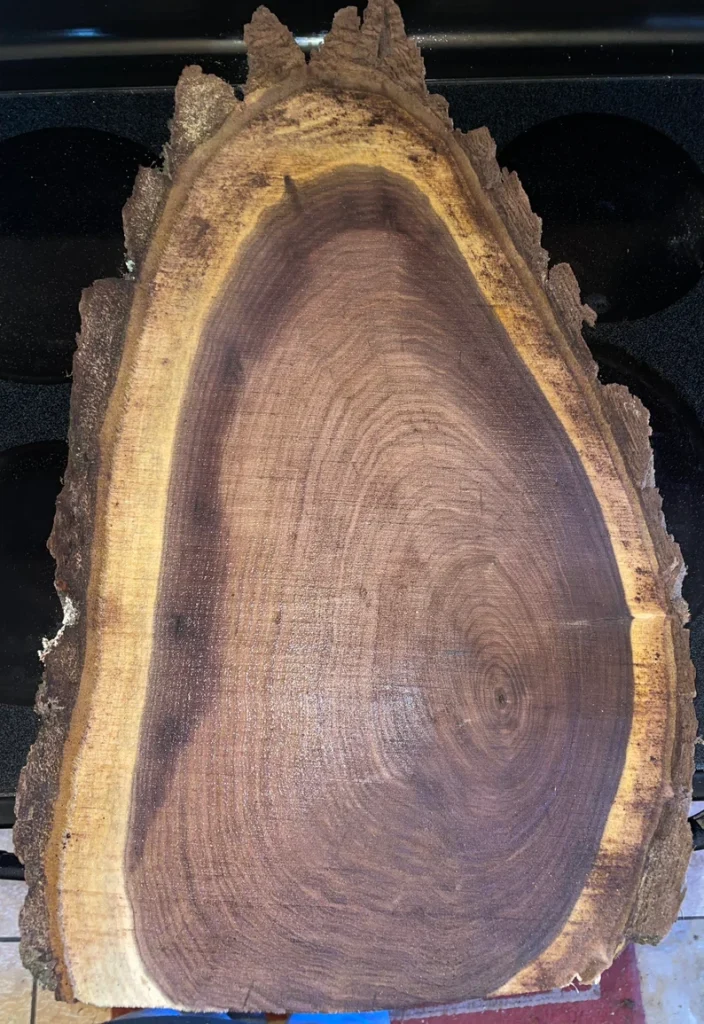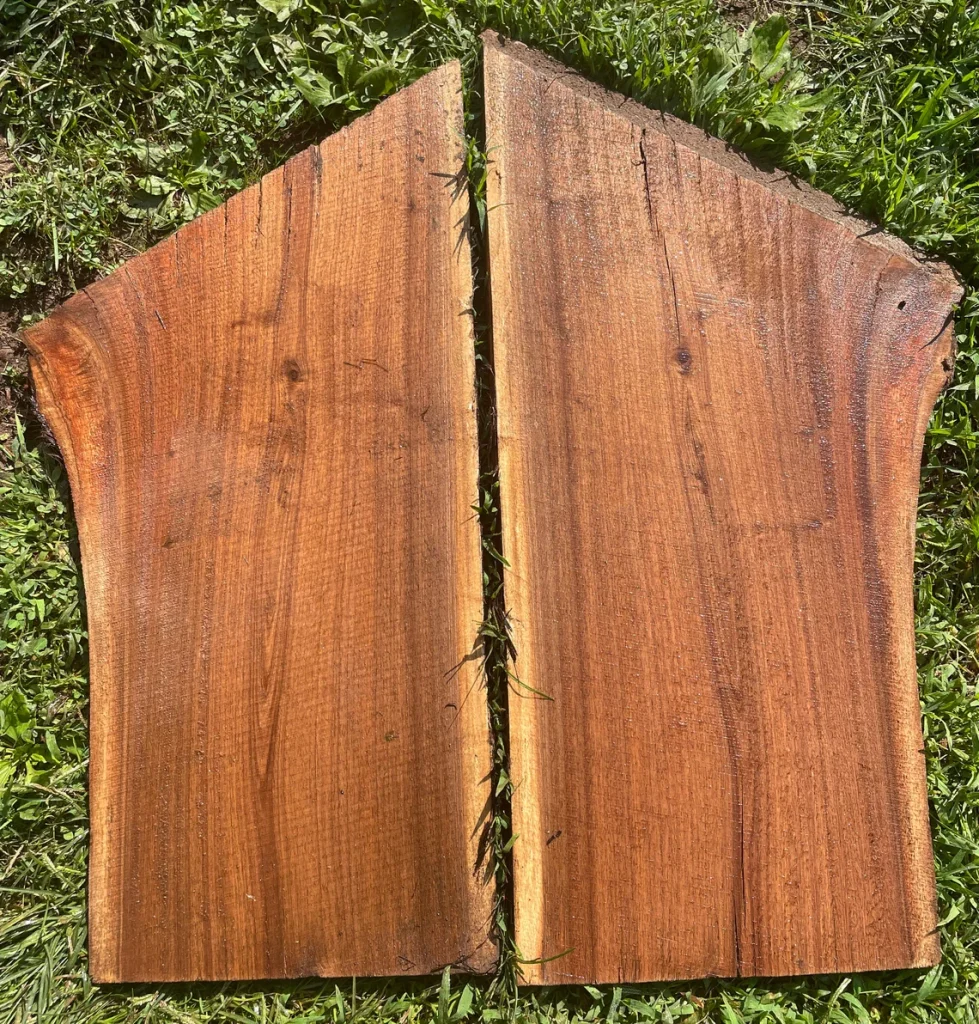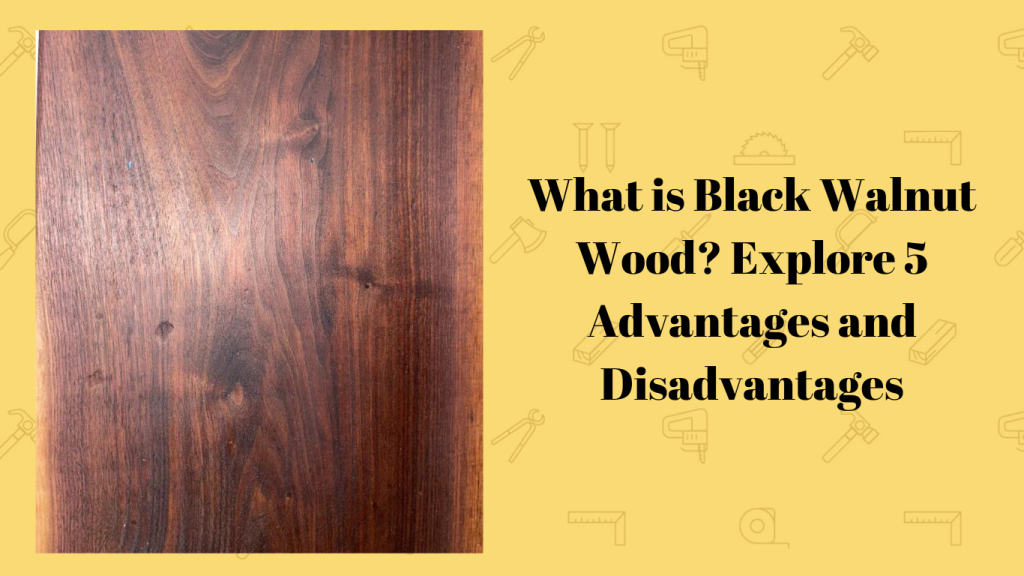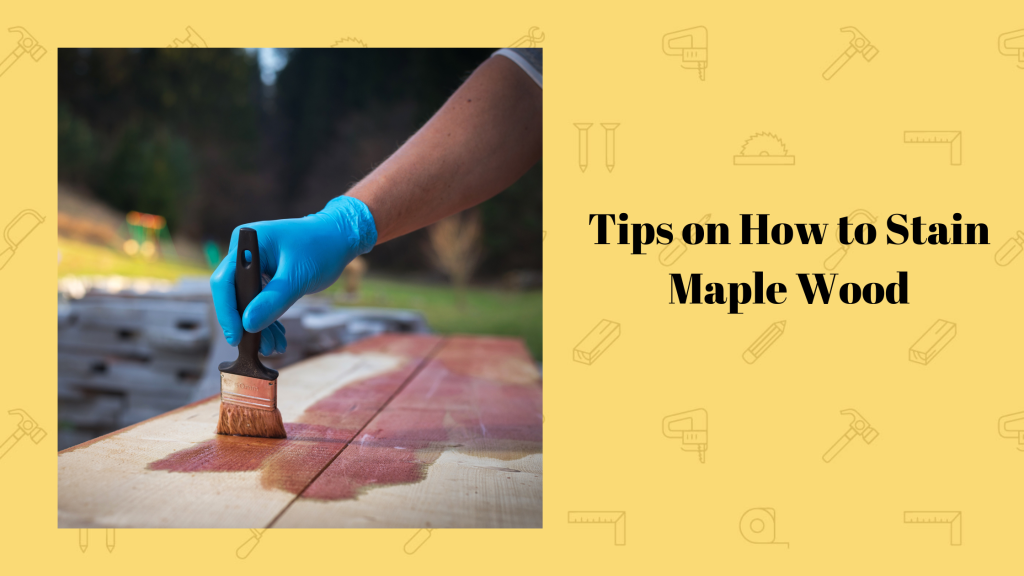Black walnut wood dons a coat of many colors. It is naturally available in white-blonde, honey-brown, and coffee-brown.
After working with hardwoods for over two decades, I know there’s more to walnut wood than its color. I’ve earned my share of nicks and splinters from working with hardwoods like black walnut and acacia wood. So, I have insider-level knowledge of walnut timber’s good, bad, and ugly.
Before writing this piece, I pulled out my decade-old woodworking journal. I gathered all the pros and cons of black walnut wood that I’ve learned during my projects.
Let’s dive in.

Advantages of Black Walnut Wood
Attractive Wood Grain
Walnut wood’s interesting timber is arguably its selling point.
Black walnut sapwood is a creamy white color, while its heartwood is a deep brown color. So, manufacturers steam the sapwood to get a dark walnut wood color.
As a rule, high-quality walnut wood is free from knots and has a moderate texture. So, decorators use walnut coffee-colored timber to create a beautiful contrast in homes and office spaces.
Resistance to Pests and Rot
Black walnut wood contains antifungal and antibacterial properties that repel insect attacks.
The tree contains tannins, which work well to keep pests away from your walnut heirloom. So, the wood will naturally repel termites, ants, and rot-causing bacteria.
Impressive Longevity
If properly maintained, walnut furniture can live up to 70 years. Knowing this, buying walnut wood doesn’t seem like such an overpriced purchase anymore.
It is like a durable investment that will last for generations. Plus, black walnut wood’s density keeps it sturdy as it ages beautifully.
Doesn’t Warp or Crack
Black walnut wood will typically not warp or crack, even in humidity. It happens because walnut is extremely dense and cut in thick slabs.
The thinner you mill light wood, the more likely it is to warp.
Stains and Polishes Well
Furniture makers love black walnut because its fine grain takes stain and finishes well. This makes it easy to refinish faded walnut furniture or darken lighter walnut.

Disadvantages of Black Walnut Wood
Highly Expensive
Black walnut lumber costs $6-$15 per board foot, so it is considered “luxury lumber”.
It is rather expensive, especially compared to cheaper hardwood alternatives. For instance, maple wood starts at $3 per board foot, and it serves nearly all the purposes of walnut wood.
So, if you have a big space to furnish, then you’ll spend thousands of dollars on walnut wood alone.
Sensitive to Sunlight
Walnut wood fades under sunlight due to the oxidizing effects of UV rays.
So, if you leave black walnut slabs under direct sunlight, you’ll notice a bleaching effect over time. This attribute can be inconvenient if your outdoor furniture or deck flooring is made from black walnut.
If you must leave your walnut furniture in direct sunlight, you’ll need to finish it with a high-quality walnut stain.
Heavyweight Lumber
Black walnut lumber weighs 39 pounds per cubic foot and 3.3 pounds per board foot. It is heavy and dense, which can be a blessing or an inconvenience.
For instance, the weight of walnut wood can hinder its transportation to the carpenter. However, its weight is still beneficial for flooring and shelving applications.
Difficult to Install
Due to its weights and strengths, black walnut wood isn’t suitable for beginners. Before mastering it, I could only carve ornaments with the timber. But installing decking and flooring wasn’t easy at all.
Prone to Scratches
Black walnut wood requires high maintenance because it holds and shows scratches and dents.
To manage the denting, some people place table toppers and rugs on their walnut surfaces. But this fix won’t be convenient for cabinets, drawers, and patio flooring.
Why Does Black Walnut Cost More?
Black walnut lumber costs more because of the increased demand and decreased supply.
Walnut wood is widely sought after because of its durability and beauty in interior applications. But, the trees only grow 15 inches in height yearly and 1 inch in diameter every three years.
So, walnut trees produce less wood than other hardwoods, which makes them harder to source. And the demand isn’t wavering, which further drives up the price.
If you have a 60-foot tall black walnut tree with a 40-inch diameter, it is easily worth $9000 today.
Why Choose Black Walnut For Your Furniture?
Here are a few reasons why you might choose walnut wood for your home’s furniture (Some are personal experiences!):
- Black walnut furniture has a luxury appeal
- With proper maintenance, your walnut woodwork can last several decades
- The walnut board is strong enough to last long but malleable enough for DIY crafts
- Black walnut timber is naturally shock-resistant, which gives it an advantage against earthquakes

Black Walnut vs Other Hardwoods
Black walnut wood rests at the premium end of the hardwood category.
Aside from its cost, black walnut has a hefty Janka rating of 1010, which means it is suitable for flooring for nearly all interior applications. Its visual appeal is also favorable for interior trim and gunstocks. That said here are some alternatives that share certain similarities and differences to black walnut woos
1. Butternut:
Similarities: Often dubbed as the white walnut, Butternut shares a distinct grain pattern with Black Walnut. From my personal working experience, it’s a joy to carve and can be stained to a darker hue closely resembling Black Walnut.
Differences: It’s softer (490 lbf on the Janka scale), hence not my go-to for flooring or high-traffic furniture. However, its cost-effectiveness makes it a decent substitute for walnut in carvings, veneer, and interior trim projects1.
2. White Oak:
Similarities: Its durability (1,350 lbf on the Janka hardness scale) reminds me of Black Walnut, making it a competent choice for cabinetry, furniture, and flooring. With the right stain, it can mimic Walnut’s coloration quite well.
Differences: The texture and grain pattern don’t quite match up to Black Walnut. It’s a solid pick when durability is the priority, but not when an exact grain match is necessary.
3. poplar:
Similarities: The grain pattern has a striking resemblance to Black Walnut, and with a good stain, it can get quite close to Walnut’s appearance.
Differences: It’s on the softer side (540 lbf), making it less suitable for high-traffic areas. It’s my choice for repair and replacement projects where the grain pattern similarity is crucial but not subjected to daily wear and tear1.
4. Acacia:
Similarities: Acacia’s rich medium to dark brown coloration and the ability to exhibit a straight and wavy grain similar to walnut have always intrigued me.
Differences: Its density and hardiness (ranging from 1,100 to 3,100 lbf) surpass Black Walnut, but the highly irregular grain can be a dealbreaker. It’s also pricier, making it a less cost-effective substitute1.
5. Mahogany and Maple:
They are budget-friendlier options, and with the right wood stain and clear finish, they can mimic Black Walnut’s aesthetics quite well. I’ve often turned to these woods when the budget is tight without compromising much on the final look. From personal experience, I can say that the right wood stain and clear finish work wonders.
A Lasting Impression
Walnut wood is a beautiful investment, but it can be expensive. Its straight-grain patterns can conform to modern, contemporary, and rustic interior styles. However, its sun-sensitivity can make it hard to maintain for interior and patio furniture.
If you’ve chosen the walnut way, then you should know the distinguishable walnut features to avoid getting bamboozled at the wood dealer. I’ve written an extensive piece covering it, so be sure to read on!
Is black walnut wood worth the price and hype? Tell us your take in the comments and share this article with a fellow woodwork hobbyist.
Frequently Asked Questions
Is Black Walnut a Good Outdoor Wood?
Black walnut wood is a great outdoor wood if you don’t mind the fading. Walnut decks, fence posts, and patio furniture often get paler with time. The beauty of black walnut wood is its natural color and grain, so I always use it indoors.
Is Black Walnut Wood Good for Anything?
Black walnut timber is ideal for construction applications, interior decor, and gunstocks. Carpenters use walnut lumber to make cutting boards, cutlery, interior trim, and flooring. Luckily, black walnut is also malleable enough for carving projects at home.
Is Black Walnut a Good Hardwood?
Walnut is a good hardwood for joinery, construction, and simple woodwork. It has a high shock resistance, so it spreads load across the board to avoid splitting. Its anti-splitting trait also makes it popular with music instrument creation like guitars and violins.
Can You Burn Black Walnut Wood?
You can burn black walnut wood for a long and slow burn, but you won’t get intense heat. However, wood dealers strip the bark from the slabs to improve its burn. Overall, black walnut wood is more valuable for furniture than it is for fires.
*This post may contain affiliate links. Please see my disclosure to learn more.



